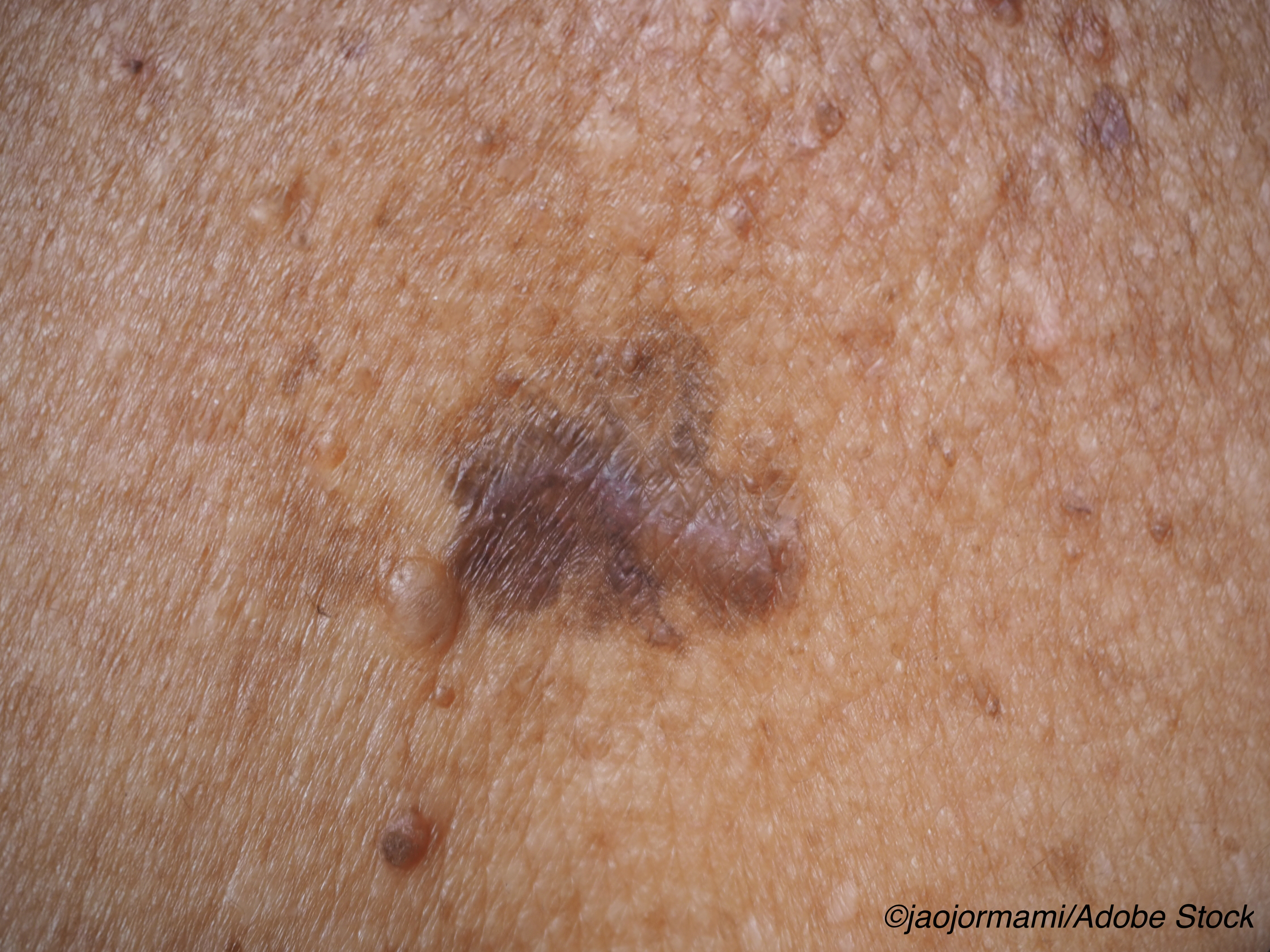
Baseline levels of circulating tumor DNA (ctDNA) can predict responses to first-line immunotherapies among melanoma patients, researchers reported in Clinical Cancer Research
“ctDNA is often heralded as a good prognostic biomarker, but we found that this is not the case for patients receiving immune checkpoint inhibitors in the second-line setting,” wrote study author Elin Gray, PhD, Edith Cowan University in Australia, in a press release accompanying the study. According to Gray and colleagues, multiple studies have demonstrated the clinical utility of ctDNA for melanoma management. For example, lower baseline ctDNA levels have been associated with longer progression-free survival (PFS) in patients with melanoma treated with immune checkpoint inhibitors (ICIs). However, other research showed that a decline in ctDNA during treatment, but not low baseline levels, predicted longer PFS and overall survival. “Thus, more studies are needed to clarify and further refine the predictive value of ctDNA in patients treated with immunotherapies, particularly taking into consideration the line of therapy, prior treatment regimens, and mutation status,” wrote Gray and colleagues. In this study, the authors analyzed 125 baseline plasma samples from 110 patients with unresectable stage IV cutaneous melanoma prior to the initiation of treatment with either immune checkpoint inhibitors (32 patients treated with first-line therapy, 27 treated with second-line therapy) or first-line BRAF/MEK inhibitor therapy (n=66). Grey and colleagues also recruited an external validation cohort of 128 patients with unresectable stage III or stage IV melanoma who commenced ICI therapies in the first- (n=77) or second-line (n=51) settings. Gray and colleagues found that low plasma ctDNA level at baseline were predictive of longer PFS (median: 57 vs 29 weeks; HR, 0.54; 95% CI, 0.30–0.98; P=0.025) for patients treated with first-line targeted therapy. In patients treated with first-line immune checkpoint inhibitors, those with low baseline ctDNA levels had an 80% longer PFS than those with high ctDNA levels (median PFS 8 weeks; HR, 0.20; 95% CI, 0.07-0.53; P<0.0001). However, there was no association between low ctDNA and longer PFS among patients receiving second-line immunotherapy (median PFS 31 vs 26 weeks; HR, 1.05; 95% CI, 0.41–2.72; P=0.913). In addition, low baseline ctDNA did not predict longer PFS in patients initiating immunotherapy as a second-line after failing therapy with BRAF/MEK inhibitors (median: 30 vs 3 weeks; HR, 0.59; 95% CI, 0.16–2.24; P=0.356). When these results were verified against a validation cohort of 128 patients with melanoma, the findings were similar, with baseline ctDNA levels associated with progression-free survival in patients who received first-line immune checkpoint inhibition, but not in those who received second-line immune checkpoint inhibitors. Gray and colleagues also found a trend showing longer PFS for patients with high baseline ctDNA treated with combination of ICIs compared with those who received anti–PD-1 monotherapy (median: 42 vs. 7.5 weeks; HR, 1.79; 95% CI, 0.90–3.53), as well as longer overall survival (median: 186 vs. 43 weeks; HR, 1.91; 95% CI, 0.87–4.21), though this finding was not statistically significant. On the other hand, patients with low ctDNA levels showed no differences in PFS or overall survival when treated with a combination of ICIs versus monotherapy. “Pretreatment ctDNA is a reliable indicator of patient outcome in the first-line ICI treatment setting, but not in the second-line ICI setting, especially in patients pretreated with BRAF/MEK inhibitors,” the authors concluded. “Preliminary evidence indicated that treatment-naive patients with high ctDNA may preferentially benefit from combined ICIs.” They also pointed out that the study was limited by the low number of patients with high ctDNA included in the survival analysis of single-agent anti–PD-1 and combination of ICIs. Thus, Gray and colleagues suggested that more prospective clinical trials are needed to confirm their results “and validate the use of ctDNA as a predictive biomarker for the treatment of patients with melanoma.” “We need more of these kinds of studies evaluating the accuracy of ctDNA in various disease contexts, particularly now that liquid biopsy and ctDNA are being increasingly incorporated into the clinic,” Grey added in a statement. Baseline levels of ctDNA can be used to predict responses to first-line immunotherapies in patients with unresectable melanoma, researchers found. Note that baseline ctDNA was not predictive of treatment outcomes in melanoma patients receiving immunotherapy in the second-line setting. Michael Bassett, Contributing Writer, BreakingMED™ Gray reported grants from the National Health and Medical Research Council, Cancer Council Western Australia, Department of Health Western Australia, Spinnaker Foundation, Perpetual Foundation, and Cancer Research Trust; grants and nonfinancial support from Merck Sharp & Dohme (Conference Travel Support); and non-financial support from Bio-Rad (Conference Travel Support) during the conduct of the study. Cat ID: 26 Topic ID: 78,26,11,26,192,925


